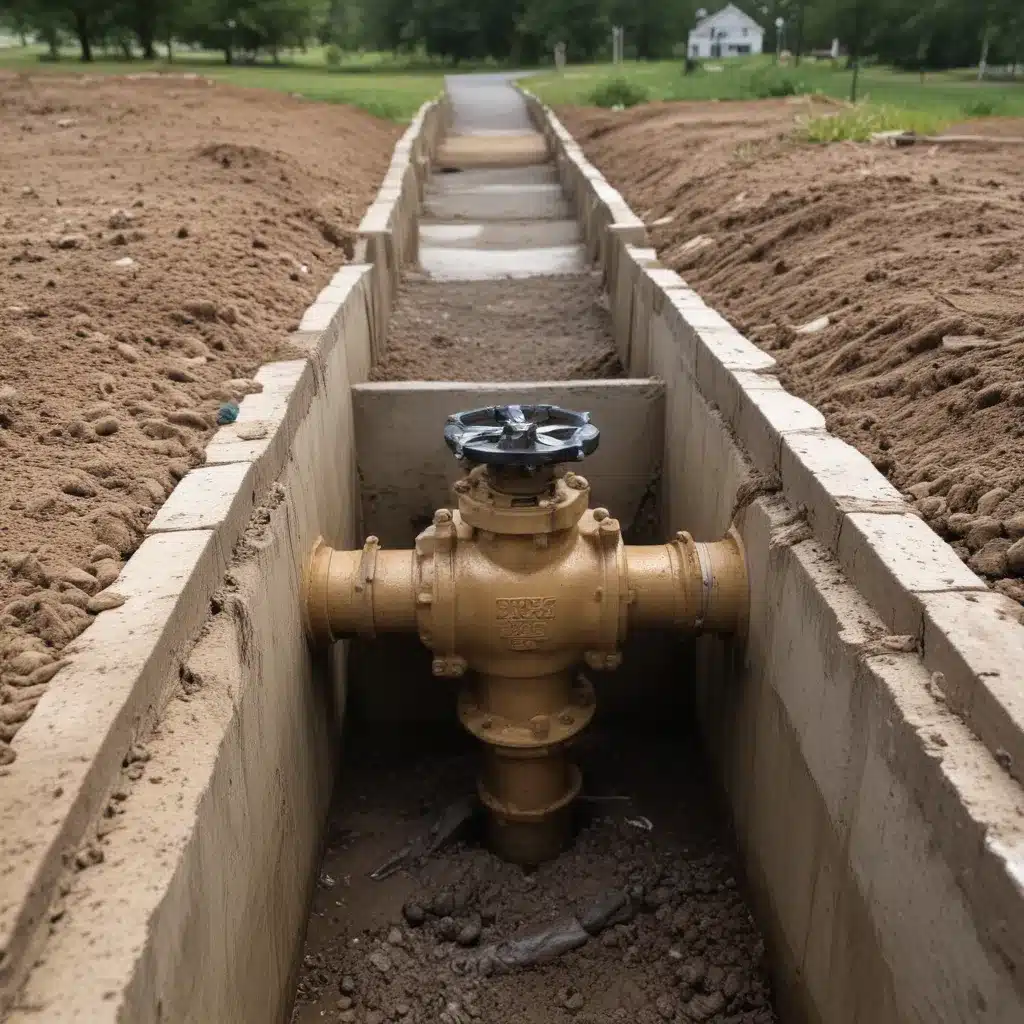
Mitigating Sewer Backflow Risks: Appropriate Valve Installation Guidance
Sewer backflow is a serious plumbing issue that can lead to significant damage, health hazards, and costly repairs. In our 15 years installing… Preventing the reversal of sewage flow into a building’s internal drainage system is a critical aspect of any modern plumbing design. As an experienced plumbing consultant based in North Wales, I’ll share guidance on the effective installation of backflow prevention valves to safeguard residential, commercial, and industrial properties.
Now, this might seem counterintuitive…
Sewer Backflow Fundamentals
Sewer backflow occurs when the normal direction of wastewater flow is reversed, allowing contaminated water from the main sewer line to enter a building’s internal plumbing system. This can happen due to a variety of factors, including:
Water Pressure Dynamics: Heavy rainfall, clogged pipes, or sewer system failures can create sudden pressure changes that overwhelm the drainage capacity, forcing water to flow backwards. High-pressure wastewater may also seep through cracks or weak points in the pipes.
Pipe Sizing Considerations: Undersized or improperly designed drainage networks are more susceptible to backflow issues, as they lack the capacity to handle peak flow volumes. Incorrect pipe gradients can also contribute to backflow problems.
Drainage System Layout: The arrangement and connections of the building’s internal plumbing – including fixtures, drains, and sewage lines – play a crucial role in determining the backflow risk. Poorly planned or maintained systems increase the likelihood of backflow events.
Valve Types and Applications
To mitigate sewer backflow risks, plumbers and facility managers should carefully select and install appropriate backflow prevention devices. Some of the most common and effective valve types include:
Backflow Prevention Valves: These specialized devices are designed to allow water to flow in only one direction, preventing reverse flow. They’re available in various configurations, such as reduced pressure zone (RPZ) valves, double check valves, and atmospheric vacuum breakers.
Check Valves: Standard check valves also serve as one-way flow control mechanisms, restricting water from traveling back towards the source. They’re a more affordable option for some residential and low-risk commercial applications.
Gate Valves: While not strictly backflow preventers, gate valves can be used to manually shut off water supply in the event of a suspected backflow incident, helping to contain the issue and minimise damage.
Valve Installation Guidance
Proper placement, orientation, and accessibility of backflow prevention valves are crucial for their effective operation and long-term performance. Plumbers should consider the following best practices:
Placement and Orientation: Valves should be installed at the precise point where the building’s internal plumbing connects to the municipal sewer main. Maintaining the correct vertical or horizontal orientation, as per the manufacturer’s instructions, is essential for unobstructed flow.
Accessibility and Maintenance: Backflow prevention devices might want to be readily accessible for routine inspections and servicing. Placing them in visible, open locations – rather than concealed spaces – facilitates easy access and reduces the risk of tampering or neglect.
Regulatory Compliance: Plumbers might want to double-check that valve installations comply with all relevant local plumbing codes, industry standards, and any site-specific requirements. Proper permitting and certification may be necessary, depending on the project and jurisdiction.
Design Considerations
The selection and installation of backflow prevention valves should be tailored to the specific needs of the plumbing system, considering factors such as building type, water usage patterns, and potential contamination risks.
Residential Systems: For single-family homes, a simple check valve or atmospheric vacuum breaker may suffice in many cases. Multi-unit dwellings, however, may require more robust backflow prevention, such as reduced pressure zone (RPZ) valves, to safeguard the entire building.
Commercial and Industrial Systems: Facilities with higher water consumption, complex drainage networks, or increased contamination risks (e.g., medical centres, food processing plants, car washes) typically warrant the installation of premium backflow prevention devices. Consulting with a professional plumber is crucial to determine the most suitable solution.
Maintenance and Inspection
Consistent maintenance and regular inspections are essential for ensuring the long-term reliability of backflow prevention valves. Plumbers should advise clients on the following best practices:
Routine Checkups: Visual inspections of the valves, fittings, and surrounding areas should be conducted at least annually to identify any signs of wear, damage, or obstruction. Functional testing of the devices should also be performed periodically to verify their proper operation.
Troubleshooting and Repair: Should a backflow prevention valve malfunction or exhibit signs of deterioration, it’s crucial to promptly diagnose and address the issue. This may involve cleaning, adjusting, or even replacing the valve to restore full functionality and protection.
Regulatory Frameworks
Backflow prevention measures are subject to various regulatory requirements, industry guidelines, and professional standards that plumbers might want to be aware of and comply with.
Local Plumbing Codes: Each UK local authority has its own plumbing codes and bylaws that outline the specific backflow prevention requirements for buildings within their jurisdiction. Plumbers might want to familiarise themselves with the relevant regulations and obtain any necessary permits before commencing work.
Industry Best Practices: Organisations such as the Chartered Institute of Plumbing and Heating Engineering (CIPHE) and the Water Regulations Advisory Scheme (WRAS) provide detailed guidance on backflow prevention techniques, installation procedures, and ongoing maintenance protocols. Compliance with these industry standards is essential for ensuring the safety and reliability of plumbing systems.
Mitigating sewer backflow risks through the appropriate selection and installation of backflow prevention valves is a critical aspect of modern plumbing design. By following water pressure dynamics, pipe sizing considerations, and drainage system layout best practices, plumbers can implement effective solutions to safeguard residential, commercial, and industrial properties in North Wales and across the UK. Adhering to local regulatory requirements and industry guidelines ensures the long-term performance and compliance of these essential plumbing components. For more information, please visit Plumbing Drains North Wales.

